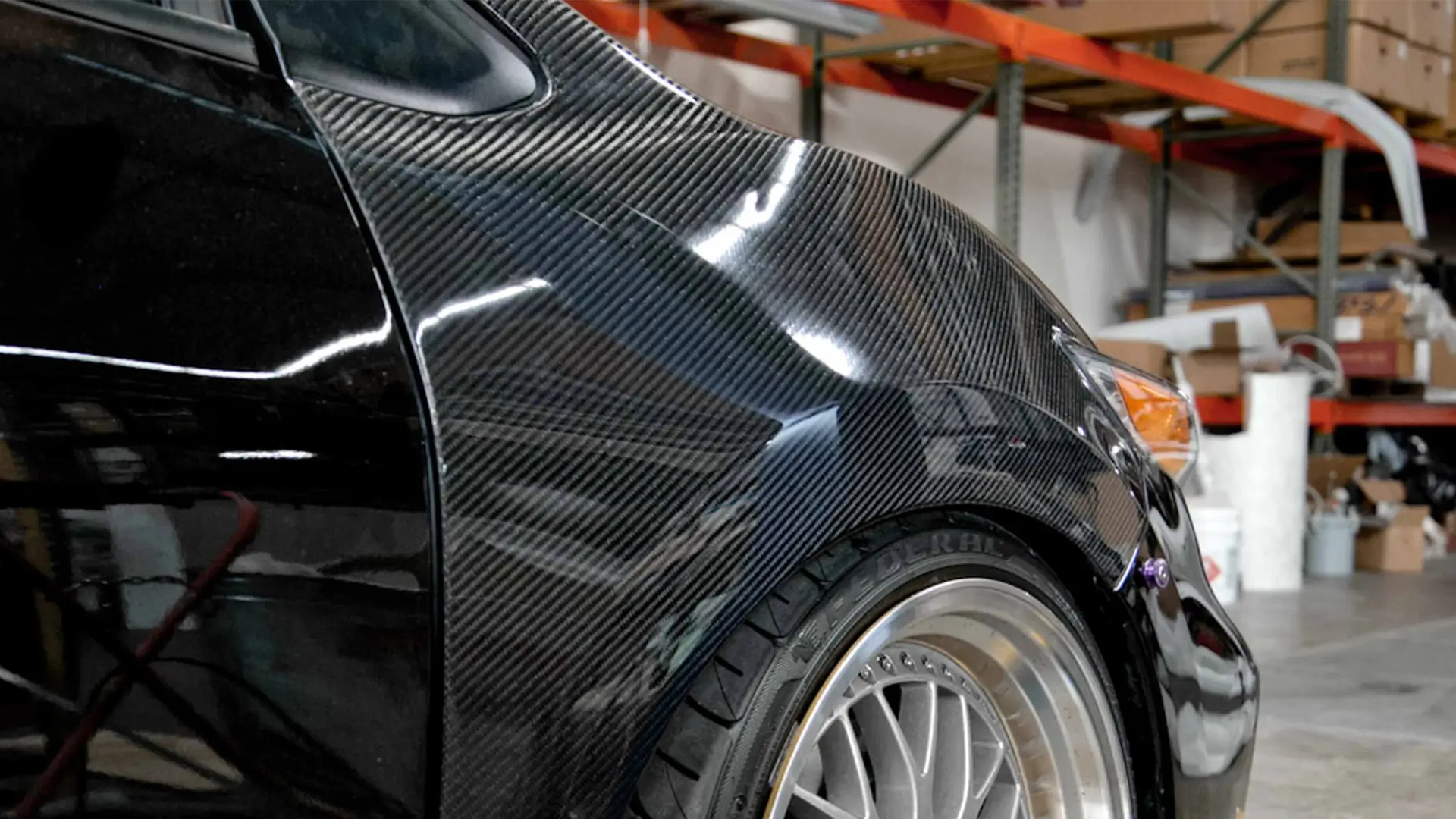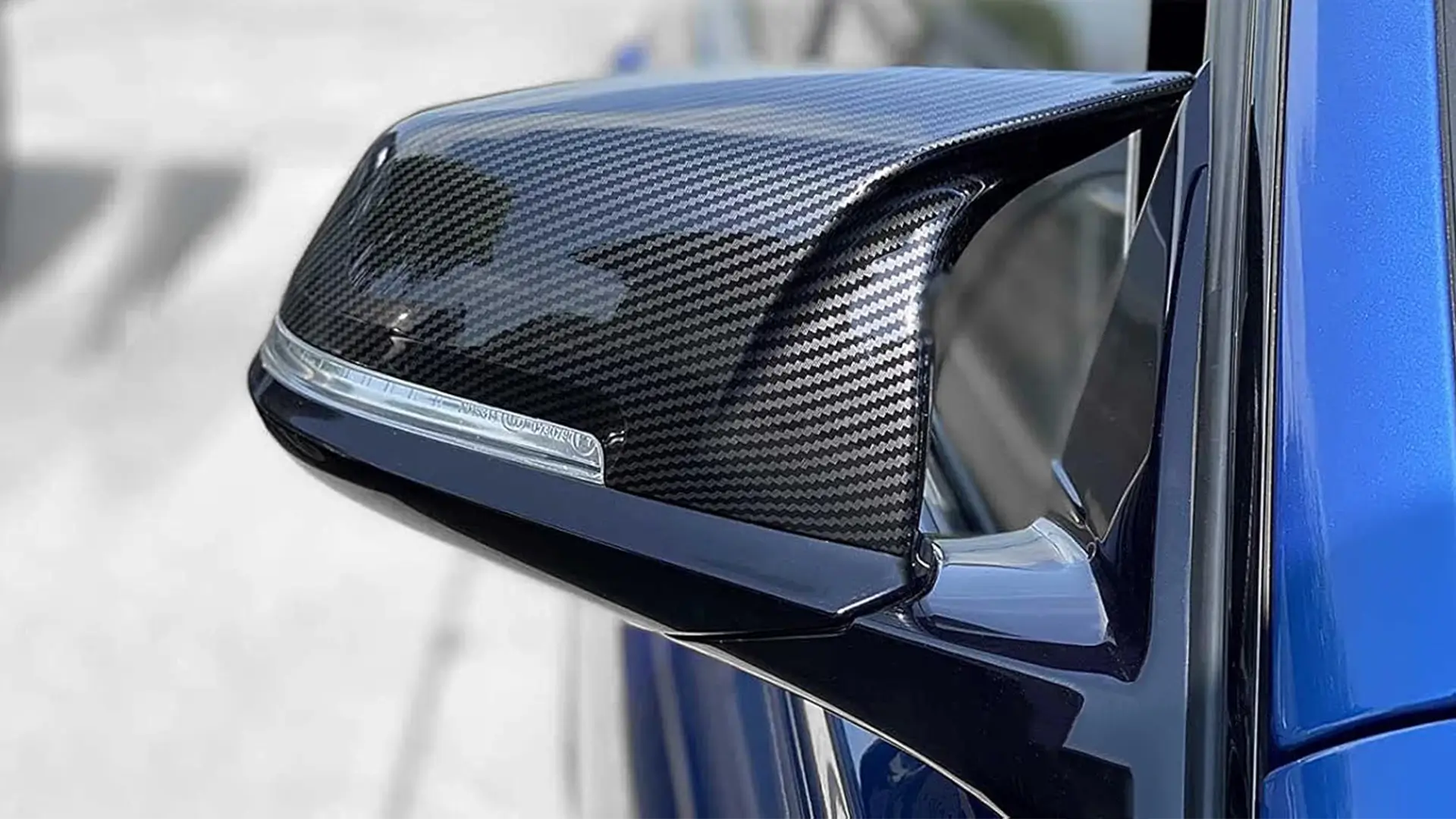The Importance of Carbon Fiber Fenders Across Industries
Carbon fiber fenders are essential components in various vehicles, from cars and motorcycles to bicycles. A carbon fiber car fender enhances vehicle performance by reducing weight, improving aerodynamics, and adding a premium aesthetic. Similarly, a carbon fiber bicycle fender offers lightweight protection for cyclists, while a carbon fiber motorcycle fender combines durability with a sleek, modern look. These components must meet rigorous standards for strength, impact resistance, and surface quality, making the choice of production method a pivotal decision.
For B2B clients, such as automotive OEMs, bicycle manufacturers, and motorcycle aftermarket suppliers, factors like production volume, part complexity, and budget influence the selection of a manufacturing method for carbon fiber fender. Below, we analyze four proven methods—hand layup with vacuum bagging, resin transfer molding (RTM), autoclave molding, and compression molding—detailing their processes, advantages, limitations, and ideal use cases to empower clients with informed decision-making.
1. Hand Layup with Vacuum Bagging for Custom Carbon Fiber Fender
Hand layup combined with vacuum bagging is a flexible and cost-effective method for producing carbon fiber fender, particularly suited for low-volume or highly customized projects.
How It Works
In this process, technicians manually layer carbon fiber fabric into a mold, applying resin to bond the fibers. The mold is then sealed in a vacuum bag, which removes air to compress the layers, ensuring even resin distribution and a smooth finish. The carbon fiber fender is cured at room temperature or in an oven, depending on the resin system.
Benefits of Hand Layup for Carbon Fiber Fenders
- Tailored Customization: Ideal for creating bespoke carbon fiber car fender, carbon fiber bicycle fender, or carbon fiber motorcycle fender with unique shapes or intricate designs.
- Low Tooling Costs: Affordable molds make this method economical for prototypes or small batches.
- High Aesthetic Quality: Vacuum bagging minimizes surface imperfections, delivering a polished carbon fiber fender.
Limitations
- Time-Intensive: Manual labor increases production time, making it less efficient for large runs.
- Skill-Dependent: Quality relies on technician expertise, which may lead to slight variations.
- Limited Scalability: Not ideal for high-volume production due to slow cycle times.
Best Applications
This method excels for custom carbon fiber fender used in low-volume applications, such as custom car builds, high-end bicycle prototypes, or bespoke motorcycle modifications. Clients seeking a one-off carbon fiber car fender for a show vehicle or a carbon fiber bicycle fender for a premium bike model will find this process highly effective.
2. Resin Transfer Molding (RTM) for Scalable Carbon Fiber Fender Production
Resin Transfer Molding (RTM) is a versatile process that balances quality, efficiency, and scalability, making it a popular choice for producing carbon fiber fender in medium to high volumes.
How It Works
Dry carbon fiber fabric is placed in a two-part mold, which is then closed. Resin is injected under pressure, saturating the fibers evenly. The mold is heated to cure the resin, forming a solid carbon fiber fender with consistent thickness and smooth surfaces on both sides.
Benefits of RTM for Carbon Fiber Fenders
- Uniform Quality: Automated resin injection ensures consistency across multiple carbon fiber fenders, reducing defects.
- Production Efficiency: Suitable for medium to large production runs, lowering per-unit costs.
- Superior Finish: Produces carbon fiber car fenders, bicycle fender, and motorcycle fender with excellent surface quality.
Limitations
- High Initial Costs: Precision molds and specialized equipment require significant upfront investment.
- Equipment Needs: Requires skilled operators and advanced machinery.
- Moderate Complexity Limit: Less suited for extremely intricate designs compared to hand layup.
Best Applications
RTM is ideal for manufacturers producing carbon fiber fenders for performance vehicles, aftermarket motorcycle parts, or high-end bicycles. It’s particularly effective for clients needing consistent, high-quality carbon fiber motorcycle fender or carbon fiber car fender in moderate to high volumes.
3. Autoclave Molding for Premium Carbon Fiber Fender
Autoclave molding is the gold standard for producing high-performance carbon fiber fender, offering unmatched strength and aesthetic quality for demanding applications.
How It Works
Prepreg carbon fiber, pre-impregnated with resin, is laid into a mold and placed in an autoclave, a high-pressure, high-temperature chamber. The heat and pressure cure the resin, creating a carbon fiber fender with exceptional structural integrity and minimal voids.
Benefits of Autoclave Molding for Carbon Fiber Fenders
- Superior Strength: Delivers carbon fiber fenders with an outstanding strength-to-weight ratio.
- Premium Aesthetics: Produces flawless surfaces, ideal for visible carbon fiber car fenders or carbon fiber motorcycle fenders.
- Precision Engineering: Tight tolerances ensure parts meet exact specifications.
Limitations
- High Costs: Expensive equipment and materials make this method costly.
- Longer Cycle Times: The curing process is slower than other methods, limiting throughput.
- Complex Tooling: Requires robust molds to withstand autoclave conditions.
Best Applications
Autoclave molding is perfect for high-end applications, such as carbon fiber fenders for luxury supercars, high-performance motorcycles, or professional racing bicycles. Clients prioritizing performance and aesthetics, such as for a premium carbon fiber bicycle fender, will benefit from this method.
4. Compression Molding for High-Volume Carbon Fiber Fenders
Compression molding is an efficient, cost-effective method for producing carbon fiber fenders in high volumes, particularly for simpler designs.
How It Works
Carbon fiber material, typically sheet molding compound (SMC) or bulk molding compound (BMC), is placed in a heated mold. The mold closes, applying pressure to shape and cure the material into a solid carbon fiber fender. The process is fast and highly automated.
Benefits of Compression Molding for Carbon Fiber Fenders
- High Throughput: Fast cycle times enable large-scale production of carbon fiber fender.
- Cost Efficiency: Low per-unit costs make it ideal for mass production.
- Durability: Produces robust carbon fiber car fender, bicycle fender, and motorcycle fender for demanding environments.
Limitations
- Shape Constraints: Best for simpler geometries with minimal undercuts or complex features.
- Tooling Investment: High initial mold costs can be a barrier for small runs.
- Surface Finish: May require post-processing for a high-gloss aesthetic.
Best Applications
Compression molding is suited for producing carbon fiber fender for mass-market vehicles, mainstream bicycles, or aftermarket motorcycle parts where cost and durability are priorities. It’s an excellent choice for clients needing large quantities of carbon fiber car fender or carbon fiber bicycle fender.
Comparing Manufacturing Methods for Carbon Fiber Fenders
To assist B2B clients in selecting the right method for their carbon fiber fenders, the following table compares the key attributes of each process:
| Manufacturing Method | Production Volume | Cost | Part Complexity | Strength | Surface Quality | Ideal Use Case |
|---|---|---|---|---|---|---|
| Hand Layup & Vacuum Bagging | Low to Medium | Low to Medium | High | Moderate | High | Custom carbon fiber car/bicycle/motorcycle fenders |
| Resin Transfer Molding (RTM) | Medium to High | Medium to High | Medium | High | High | Scalable production of carbon fiber fenders |
| Autoclave Molding | Low to Medium | High | High | Very High | Very High | Premium carbon fiber fenders |
| Compression Molding | High | Medium | Low to Medium | High | Moderate to High | Mass-produced carbon fiber fenders |
Key Considerations for Selecting a Production Method
When deciding on a manufacturing method for carbon fiber fenders, clients should evaluate the following factors:
- Production Volume: High-volume projects benefit from compression molding or RTM, while low-volume or custom orders align with hand layup.
- Budget Constraints: Compression molding offers cost savings for large runs, while autoclave molding is suited for premium, high-budget projects.
- Design Complexity: Intricate carbon fiber motorcycle fender may require hand layup, while simpler carbon fiber bicycle fender suit compression molding.
- Performance Needs: High-performance applications, such as racing, favor autoclave molding or RTM for superior strength.
- Aesthetic Requirements: For a flawless carbon fiber car fender finish, autoclave molding or RTM are preferred.
Why Choose Alizn for Your Carbon Fiber Fender?
At Alizn, we combine advanced technology with deep industry expertise to deliver carbon fiber fenders that meet the diverse needs of our B2B clients. Our state-of-the-art facilities support a range of production methods, from hand layup to compression molding, ensuring flexibility and precision. Whether you require a lightweight carbon fiber bicycle fender for a high-end bike, a durable carbon fiber motorcycle fender for aftermarket upgrades, or a premium carbon fiber car fender for a performance vehicle, Alizn provides comprehensive support from design to delivery.
Conclusion
Choosing the right manufacturing method for carbon fiber fenders is essential to achieving the desired balance of performance, cost, and aesthetics. Hand layup with vacuum bagging, resin transfer molding, autoclave molding, and compression molding each offer unique advantages, depending on the project’s requirements. At Alizn, we are dedicated to empowering our B2B clients with the knowledge and solutions needed to succeed. Contact us today to explore how we can craft the perfect carbon fiber fender for your next project.
Final Thoughts
As composite material experts, we are willing to provide you with critical assistance. The correct judgment now avoids cost overruns, delays, and disappointing results later.
Need advice on your custom carbon fiber part? Reach out to our team for expert guidance.




